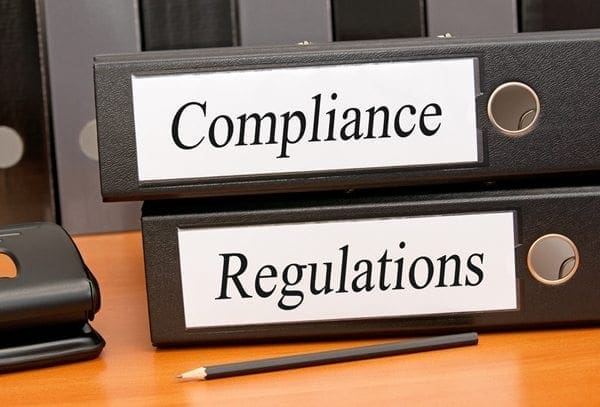As the deadline for GDPR compliance rapidly approaches, many organizations are scrambling to get their ducks in a row. If you’re one of them, don’t worry – we’ve got you covered. In this post, we’ll walk you through everything you need to do to ensure your organization is compliant with GDPR. Plus, we’ve created a handy checklist to help make the process a little bit easier. So read on and get started!
Whether or not a business is located in Europe doesn’t matter when it comes to General Data Protection Regulation (GDPR) requirements; what matters is the data collected and if that data involves citizens in European Union (EU) countries.If a business has EU clients and/or business partners, even if it is just one client or business partner, it means the company must comply with GDPR.
GDPR Preparation Checklist
The deadline to meet compliance is May 25. To help you meet this deadline, here’s a checklist of things to do to get on track with GDPR compliance requirements.
- Ensure global data hygiene standards are being met and monitored by top management so that everyone is already taking the basic steps to keep data clean.
- Involve the departments and people within the company that collects, analyze, and/or otherwise makes use of customers’ PII (personally identifiable information) to create a GDPR lead group.
- Conduct a risk assessment to find out what data you store and process on EU citizens, as well as manage your risks and uncover shadow IT that might be collecting and storing PII data (which could cause you non-compliance if not taken care of).
- Get a full picture of your entire IT infrastructure and inventory of all applications anywhere data could be stored.
- Hire or appoint a DPO (data protection officer) that can ensure the protection of PII with no conflict of interest. Virtual DPOs, such as consultants, is an option.
- Create, review and/or update data protection plans to ensure that those plans align with GDPR requirements.
- Ensure that mobile devices, along with their apps, that access, and store PII do so in a GDPR-compliant manner.
- Test your incident response plans to ensure they meet the GDPR requirement that companies report breaches within 72 hours.
- Set up a process for ongoing assessment to ensure that you remain in compliance with GDPR long-term and avoid non-compliance.
- If you don’t have the resources to fulfill all these needs, ask for help.
Data Processing for GDPR
Data protection is an essential requirement for organizations today in order to comply with the General Data Protection Regulation (GDPR). Data processing must be performed with respect to the rights of Data Subjects, ensuring that any Data Breach is identified and reported appropriately. Organizations should leverage GDPR-compliant tools and systems such as Data Leak Prevention, Data Masking, and Data Encryption, which help protect Data Subjects’ information by limiting access and preventing unauthorized distribution. Additionally, it’s also essential for organizations to conduct regular audits to ensure compliance with GDPR standards. As data becomes more valuable than ever before in today’s digital world, GDPR Data Processing helps keep critical information secure while respecting the privacy of Data Subjects.
Some concerns that have been pointed out with GDPR involve things like what constitutes PII and if companies are required to have the same level of protection for things like an individual’s IP address or cookie data and information like name and address. Unfortunately for companies and security teams, the GDPR leaves room for interpretation since it uses the term “reasonable” level of protection and doesn’t define that “reasonable” level. However, consulting with security experts and taking a holistic cybersecurity approach can both be helpful in being better prepared.
GDPR and Data Breaches
With the implementation of GDPR, many organizations have had to adjust their current IT strategies in order to ensure compliance. Data breaches are violations of the GDPR regulations, potentially resulting in immense fines and legal repercussions. If a data breach occurs, organizations must take immediate action to contain the breach, as well as notify customers that their personal data may have been compromised. Compliance with GDPR shouldn’t be taken lightly; understanding what policies and procedures must be followed can help prevent costly data breaches in both the short and long term.
Final Thoughts
If your company deals with data from citizens in the European Union, it’s essential to be aware of GDPR compliance requirements. The deadline to meet these requirements is May 25, 2018, and failure to do so can result in heavy fines. To help you get on track for meeting this deadline, we’ve provided a checklist of things that need to be done in order to ensure GDPR compliance. These include ensuring global data hygiene standards are being met; involving departments and people within the company that collect PII; conducting a risk assessment; getting a complete picture of your IT infrastructure and applications anywhere data could be stored; hiring or appointing a DPO; creating, reviewing and/or updating data protection plans; testing incident response plans; and setting up a process for ongoing assessment. Data processing must be performed lawfully, transparently, and consistently with stated purposes. If you have questions or need help with GDPR compliance, please don’t hesitate to give us a call.
If you have questions or need help regarding the GDPR, give us a call!
Schedule your free consultation before the GDPR deadline on May 25 to meet necessary compliance requirements and, in doing so, avoid losing business or having to pay hefty fines for non-compliance.
Photo courtesy of docstockmedia

